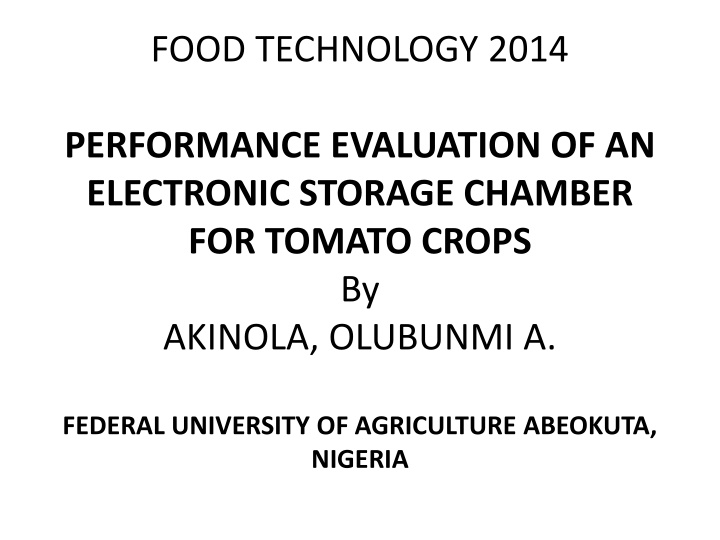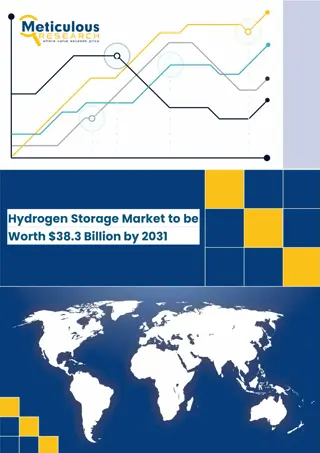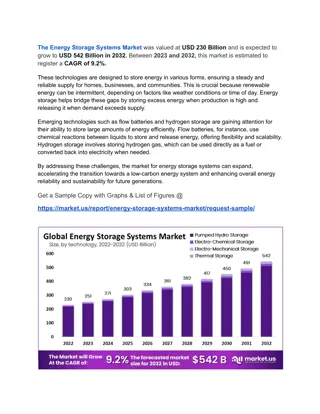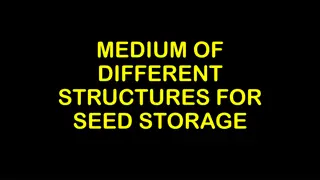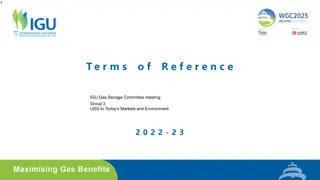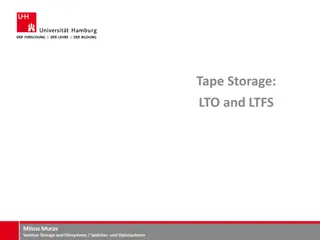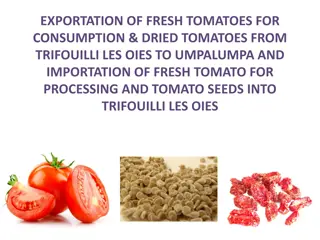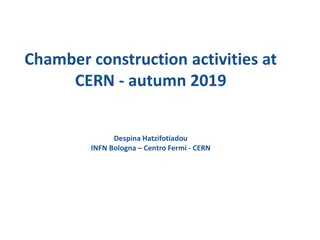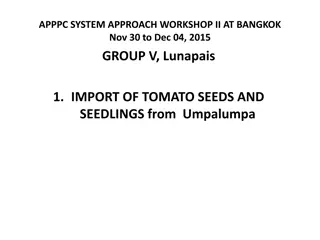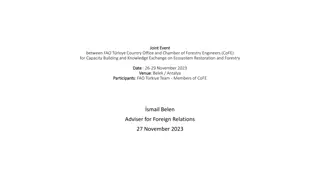Evaluation of Electronic Tomato Storage Chamber
This study evaluates the performance of an electronic storage chamber designed to monitor and control temperature and humidity levels for tomato crops. Results show significant improvements in shelf-life, reducing post-harvest losses and enhancing crop availability for consumption.
Download Presentation

Please find below an Image/Link to download the presentation.
The content on the website is provided AS IS for your information and personal use only. It may not be sold, licensed, or shared on other websites without obtaining consent from the author.If you encounter any issues during the download, it is possible that the publisher has removed the file from their server.
You are allowed to download the files provided on this website for personal or commercial use, subject to the condition that they are used lawfully. All files are the property of their respective owners.
The content on the website is provided AS IS for your information and personal use only. It may not be sold, licensed, or shared on other websites without obtaining consent from the author.
E N D
Presentation Transcript
FOOD TECHNOLOGY 2014 PERFORMANCE EVALUATION OF AN ELECTRONIC STORAGE CHAMBER FOR TOMATO CROPS By AKINOLA, OLUBUNMI A. FEDERAL UNIVERSITY OF AGRICULTURE ABEOKUTA, NIGERIA
ABSTRACT The major problem faced by farmers is the rapid deterioration of harvested crops as a result of inadequate storage facilities which is also peculiar to tomato crop. This problem has led to heavy loses of farmer's produce during post harvest period which in turns result to reduction in farmer's income and availability of the crop for a longer time for consumption. This paper evaluates the performance of an electronic storage chamber for tomatoes. The electronic storage chamber was designed to monitor and control temperature and humidity level. The storage chamber comprised of the cooling unit, the electronic controlling circuit, power control circuit, switching and logic circuits and transducer.
ABSTRACT CONTD The reference values used were 9.5 oC for temperature and 95 % humidity level. The output was interfaced to the power control circuit of the cooling system, and the humidity adjusting mechanism to keep the state of the chamber to these desired values. The maximum mass of tomatoes designed for storage in the chamber was 10 kg. Tests were carried out for eight weeks and the corresponding tomato parameters in terms of weight, firmness, ripening index and percentage cumulative spoilage were obtained. The result of the percentage deterioration of the weight, firmness, percentage cumulative spoilage and ripening indices for the chamber was compared with the control; original tomato parameters. These were 28.9 and 95 %, 9.9 and 97.9 %, 19.4 and 96.5 %, 72 and 195 respectively. This paper has shown that the performance of electronic storage chamber will significantly improve the shelf - life of tomato crop.
INTRODUCTION Tomato is an herbaceous, usually sprawling plant. Tomato is a popular vegetable with a high per capita consumption in the world as it is used in almost all homes. Postharvest losses in tomato fruits could occur as a result of chilling injury, insect damage, mechanical damage and stress during production, improper harvest sanitation, poor cooling and ventilation, and environment control.
INTRODUCTION CONTD Despite the economic and nutritional importance of tomato, very little research has been done to identify the optimum environmental conditions for extending postharvest life of tomatoes (5). This research work involves various tests (weight, firmness, ripening index and percentage cumulative spoilage) that was carried out on the tomatoes before putting it in the chamber and after it has been stored in the chamber for a period of eight weeks.
INTRODUCTION CONTD The parameters that were controlled are the temperature and humidity which are the major focus for this study. Control of temperature and humidity are widely used in the storage of tomatoes. Several combinations of temperature and humidity have been tried (7). These parameters were monitored by their various sensors and crucial tests were carried out based on the set values of the parameters to be controlled. This determines the effectiveness and the characteristic performance of the constructed storage chamber.
METHODOLOGY THE CHAMBER The chamber with a length of 39 cm, width of 43 cm and height of 48 cm, has a total volume (39 cm x 43 cm x 48 cm) of 80,500 cm . It consists of two sections which are the refrigerating section and the electronic controller section. The chamber uses a 75 watt compressor (1/10 hp). Temperature analyser The sensor used is a thermistor which has a resistance which varies strongly with the temperature. Humidity analyser This is also a transducer that determines the amount of water in an environment. For this study, a humidity sensor based on capacitive cell was used.
METHODOLOGY CONTD TEST CHARACTERISTICS The method used for the performance evaluation of the electronic storage chamber comprised of the control experiment and test experiment. Control experiment 10 kg of tomato was weighed by a spring balance after which it was placed in a tray. The tomatoes were laid in the open space at room temperature. Test experiment 10 kg of tomato was weighed by a spring balance. The weighed tomatoes were arranged inside the electronic storage chamber with a pre-set value of 9.5 C temperature and 95 % humidity
METHODOLOGY CONTD Theoretical model Weight of tomatoes weight loss can be calculated as, Let x'= initial weight, and x= weight after being stored for a period of time. Weight loss = and, Percentage loss in weight = ( )/ x 100
METHODOLOGY CONTD Theoretical model Firmness EL 46 5290 ELE International Standard Penetrometer was used for measurements. Ripening index A to F = product of the scores assigned and the number of fruits used at each stage of ripening. Y: Total number of fruits in the determination A, B, C, D & F Z: The number of stages of ripening in the replicate (10).
RESULTS AND DISCUSSION Weight Firmness WEEK TEST(N) CONTROL(N) PERIOD(WEEK) TEST(Kg) CONTROL(Kg) 1 9.85 9.85 1 2.42 2.4 2 9.50 9.00 2 2.38 2.25 3 8.80 8.50 3 2.34 2.12 4 8.50 7.51 4 2.29 1.65 5 8.20 4.20 5 2.25 1.00 6 7.40 1.20 6 2.22 0.64 7 7.20 0.90 7 2.20 0.33 8 7.00 0.5 8 2.18 0.05
RESULT AND DISCUSSION Ripening Index Percentage Cumulative Spoilage WEEK TEST CONTROL WEEK TEST CONTROL 1 0 0 1 1.1 2.4 2 5 45 2 2.5 4.4 3 17 74 3 3.5 10.5 4 27 96 4 4.5 14.4 5 40 115 5 8.4 21.5 6 55 140 6 10.0 24.0 7 69 170 7 11.6 35.0 8 72 195 8 13.2 42.0
RESULT AND DISCUSSION 12 3 10 2.5 8 Weight (Kg) 2 Firmness (N) 6 1.5 TEST(N) 4 TEST(Kg) 1 CONTROL(N) CONTROL(Kg) 2 0.5 0 0 1 2 3 4 5 6 7 8 9 1 2 3 4 5 6 7 8 9 week Week Weight Firmness
RESULT AND DISCUSSION 250 45 40 Percentage Spoilage (%) 200 35 Ripening Index 30 150 25 20 TEST TEST 100 15 CONTROL CONTROL 10 50 5 0 0 1 2 3 4 5 6 7 8 9 1 2 3 4 5 6 7 8 9 Week Week Ripening Index Percentage Cumulative Spoilage
CONCLUSION The factor with the most deterioration rate is the firmness, with a deteriorating rate of 9.9 % for the test compared to 81.6 % for the control. Although the weight deteriorated reasonably with a deteriorating rate of 28 % for the test compared to 59 % for the control. There was rapid increase on the ripening index and the percentage cumulative spoilage of the control compared to that of the test.
CONCLUSION The rate observed after the eight weeks period for the index of ripening was 72 for the test compared to 195 for the control and rate observed for the percentage cumulative spoilage after the eight weeks period was 13.2 % for the test compared to 42 % for the control. Spoilage of the tested tomatoes was reduced significantly and tomatoes maintained its high quality value and freshness within the chamber for a period of eight weeks.
REFERENCES Goodenough, P.W. and T.H. Thomas (1980) Comparative physiology of field grown tomatoes during ripening on the plant or retard ripening in controlled atmospheres , Beltsville Agricultural Research Center, Agricultural Research Service, U.S. Dept. of Agriculture, 10300 Baltimore Ave., Beltsville, Md., U.S.A. 20705-2350 Hong, J.H. and K.C. Gross. 2001. maintaining quality of fresh-cut tomato slices through modified atmosphere packaging and low temperature storage . Journal of American Society of Horticultural Science. 125, 736 741. Nakhasi, S., D. Schlimme and T. Solomos. (1991). Storage potential of tomatoes harvested at the breaker stage using modified atmosphere storage Journal of Food Science 56(1):55-59. Artherton, J.G. and J. Rudich (1994) The Tomato Crop- A Scientific Basis for Improvement Chapman and Hall, London. Adegoroye, A. S., P.A. Jolliffe, and M.A. Tung. 1989. Textural characteristics of tomato fruits (Lycopersiconesculentum) affected by sunscald. J. Sci. Food Agr. 49:95 102. Parsons, C. S., R. E. Anderson, and R. W. Penney (1970) Storage of mature- green tomatoes in controlled atmosphere Journal of American Society of Horticultural Science. 95:791-794. Eric Risch and Ernest L. Watson (1980) effect of post-harvest treatment on the rate of weight loss from tomatoes during storage Can. Agric. Eng. 22: 179-184
